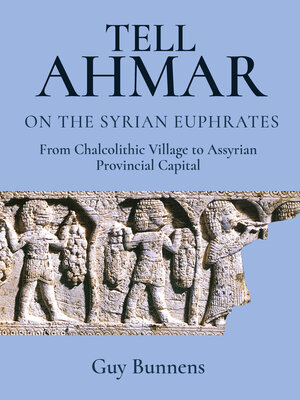Tell Ahmar on the Syrian Euphrates
ebook ∣ From Chalcolithic Village to Assyrian Provincial Capital
By Guy Bunnens

Sign up to save your library
With an OverDrive account, you can save your favorite libraries for at-a-glance information about availability. Find out more about OverDrive accounts.
Find this title in Libby, the library reading app by OverDrive.



Search for a digital library with this title
Title found at these libraries:
| Library Name | Distance |
|---|---|
| Loading... |
Tell Ahmar – also known as Masuwari, Til Barsib and Kar-Shalmaneser in the first millennium BCE – was first inhabited in the sixth millennium, during the Ubaid period, and progressively developed to become a regional center and, in the eighth and seventh centuries, a provincial capital of the Assyrian empire. Remains from the third millennium (a temple and a funerary complex), the second millennium (an administrative complex and well-preserved houses) and the first millennium (an Assyrian palace and elite residences) are particularly impressive.
The book offers an archaeological and historical synthesis of the results obtained by the excavations of François Thureau-Dangin (1929–1931) and by the more recent excavations of the universities of Melbourne (1988–1999) and Liège (2000–2010). It presents a comprehensive and diachronic view of the evolution of the site, which, by its position on the Euphrates at an important crossroads of ancient communication routes, was at the heart of a game of cultural and political interference between Mesopotamia, the Mediterranean world and Asia Minor.
The book offers an archaeological and historical synthesis of the results obtained by the excavations of François Thureau-Dangin (1929–1931) and by the more recent excavations of the universities of Melbourne (1988–1999) and Liège (2000–2010). It presents a comprehensive and diachronic view of the evolution of the site, which, by its position on the Euphrates at an important crossroads of ancient communication routes, was at the heart of a game of cultural and political interference between Mesopotamia, the Mediterranean world and Asia Minor.







